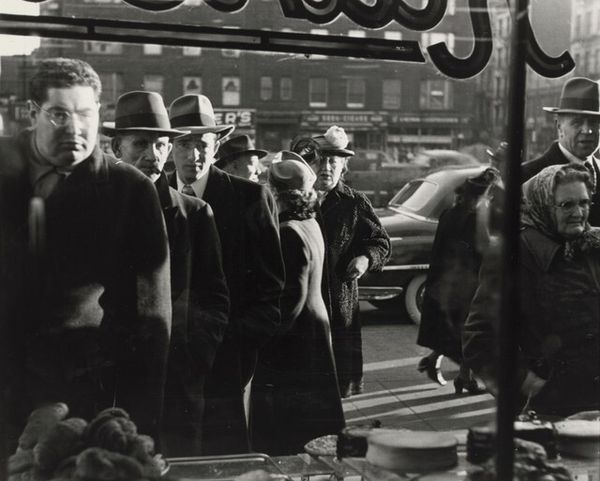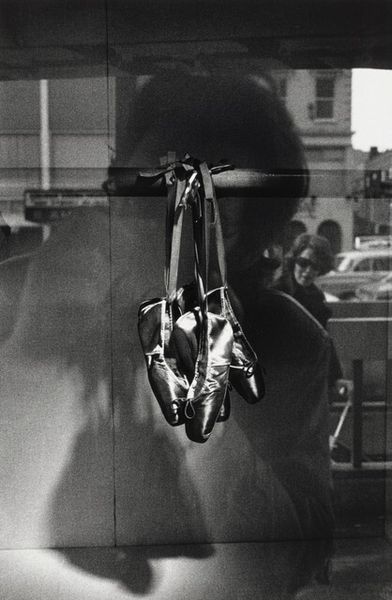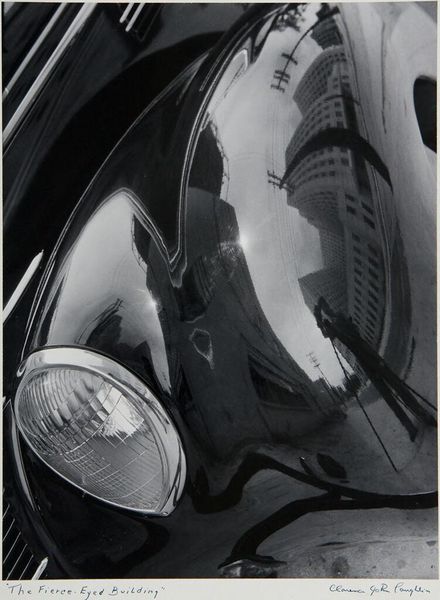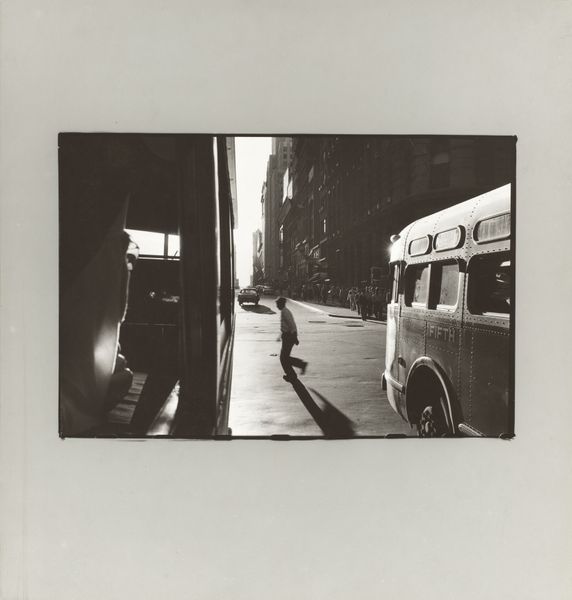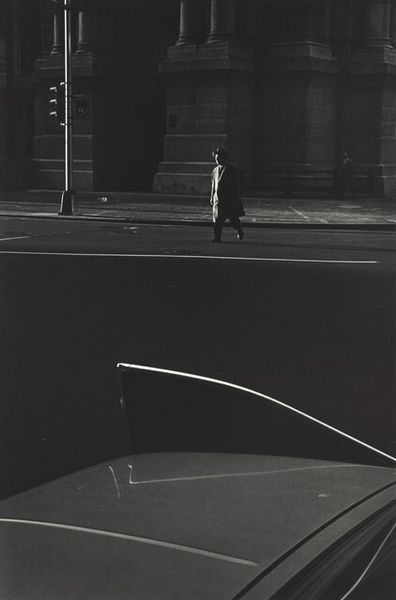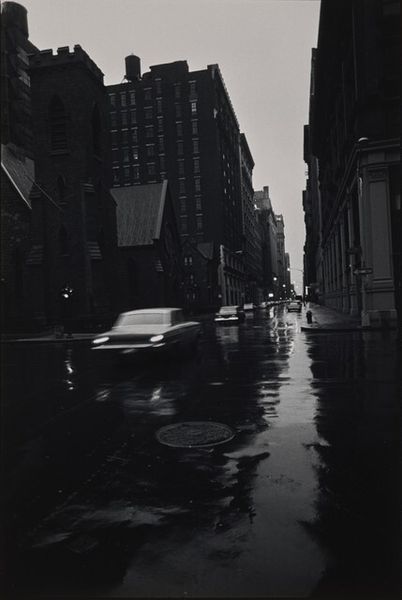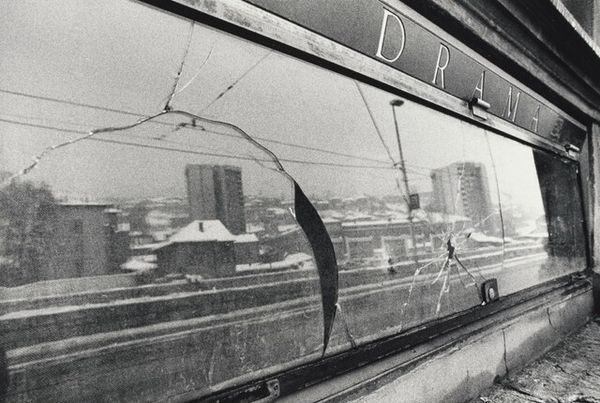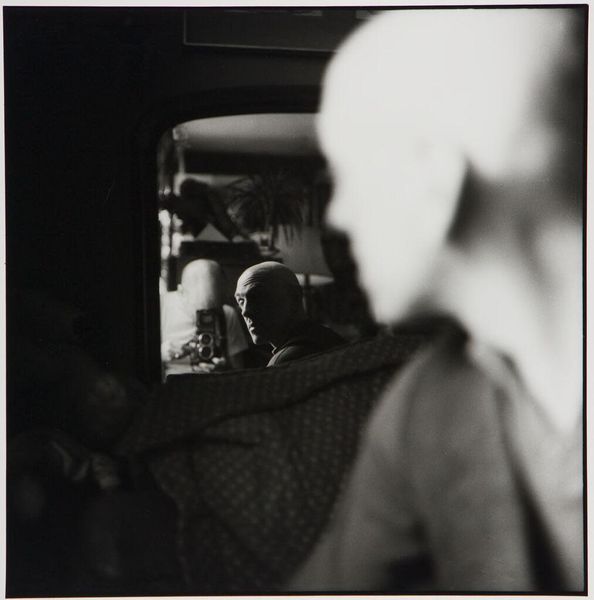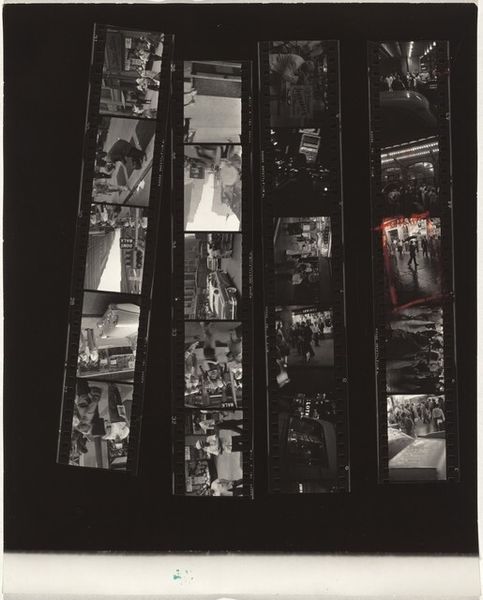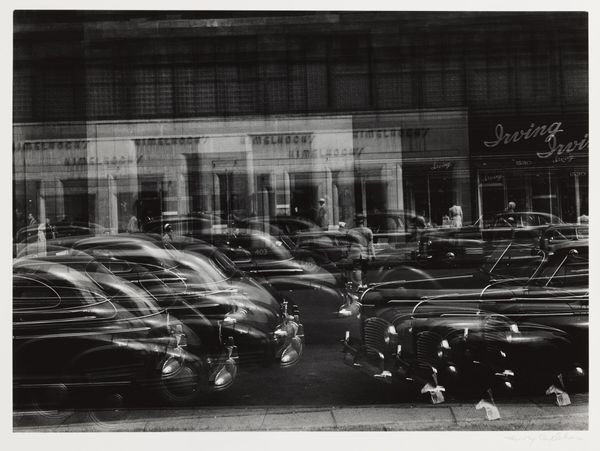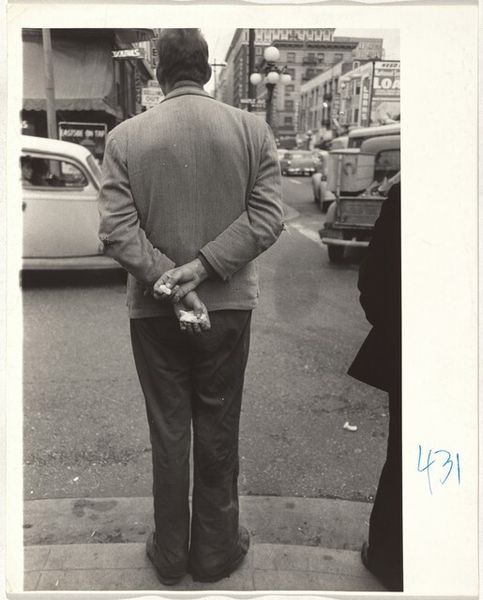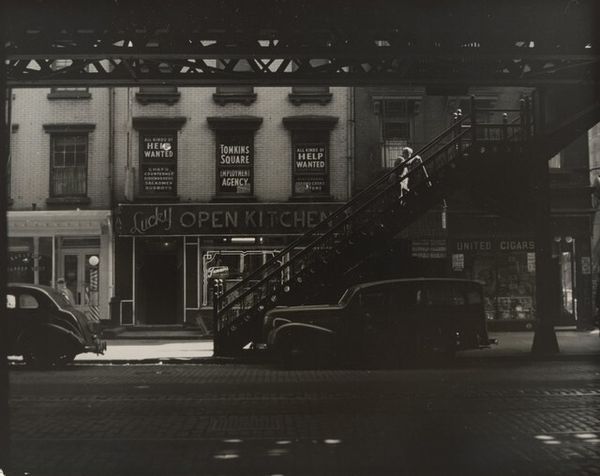
Dimensions: image: 45.4 x 33.5 cm (17 7/8 x 13 3/16 in.) sheet: 50.2 x 40.5 cm (19 3/4 x 15 15/16 in.)
Copyright: National Gallery of Art: CC0 1.0
Curator: This photograph, "Selwyn, 42nd Street, New York," captured by William Klein, offers a glimpse into the mid-century urban landscape, likely taken sometime between 1955 and 1989. Editor: Immediately, what strikes me is the density, almost a claustrophobia. The reflections are dizzying. Look at the polished car—a fetishized object, a black mirror reflecting the commercial spectacle of the Selwyn theater and the mass of faces passing by. Curator: I love how he plays with those reflections. It blurs the line between subject and context, doesn't it? The stark black and white amplifies that tension, making everything feel both hyper-real and strangely dreamlike. The very image feels spontaneous, as if he just happened to walk by this scene at night. Editor: The gelatin-silver print enhances that grainy, high-contrast aesthetic, which speaks directly to Klein’s experimental approach to photography, right? His work moves against the pristine and favors a more gritty, almost documentary style of visual production and dissemination, questioning conventional norms around craft. It's not just the content, but the *how*—the reproduction—that matters. The Selwyn movie house seems to host low- to mid-budget action and western pictures based on that marquee. The casual way these kinds of visual treats are placed so conspicuously on street, speaks of capitalist society where such offerings form our sense of place and identity. Curator: Absolutely, the print quality supports his embrace of the imperfect, the messy reality of city life. It rejects the idea of a detached observer, plunging the viewer into the thick of things. You are suddenly caught in a mid-century commercial hub! I appreciate it for that sense of energy alone, a little chaos I think most people can relate to! Editor: It definitely does reflect the sensory bombardment of modern life—the interplay between individual bodies, mass media and transportation infrastructure. To reiterate—by choosing street photography, Klein moves out of the sterile studio setting and embraces the everyday lived experiences. Curator: It’s a fascinating reminder of how even seemingly ordinary scenes can become powerful statements through the right lens. Editor: Definitely food for thought on the machinery that creates "the good life" for everyday people.
Comments
No comments
Be the first to comment and join the conversation on the ultimate creative platform.

